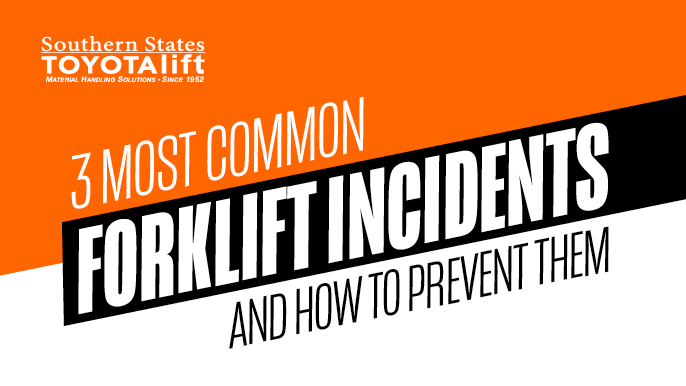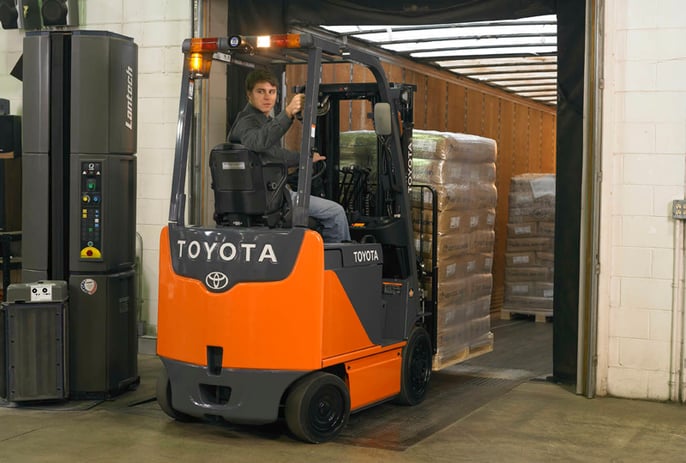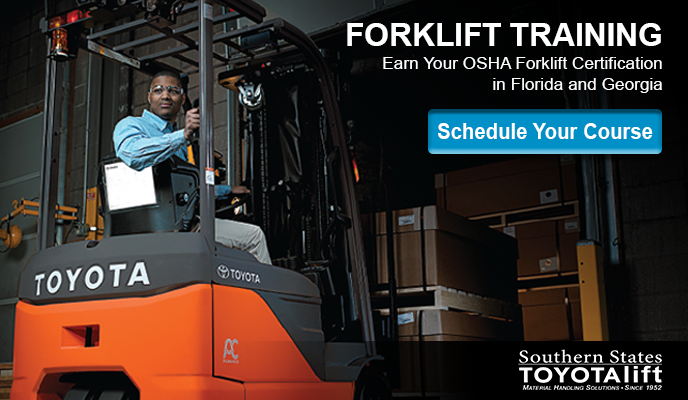3 Most Common Forklift Incidents and How To Prevent Them
by Dave Tullis, on Jun 7, 2021 2:45:00 PM
 Forklifts are one of the most important pieces of equipment in the modern warehouse. They can also be one of the most dangerous when used improperly. Each year in the United States, nearly 100,000 workers are seriously injured by a forklift-involved accident. Warehouse safety officers know how important safety is. Here are three of the most common incidents and how to reduce them.
Forklifts are one of the most important pieces of equipment in the modern warehouse. They can also be one of the most dangerous when used improperly. Each year in the United States, nearly 100,000 workers are seriously injured by a forklift-involved accident. Warehouse safety officers know how important safety is. Here are three of the most common incidents and how to reduce them.
1. Forklift Collisions
When a forklift collides with another forklift or anything else, something has gone seriously wrong. Issues with unsafe operation, workplace design, and warehouse maintenance can all contribute to this. To reduce the risk of forklift collisions, your best options are:
- Update your forklift safety training and certification program. Audit your operators’ records - when was the last time they completed training? Make sure each of your operators has completed their certifications and training annually to ensure safe forklift operation.
- Look for patterns. If incidents are occurring in the same places, your warehouse may need to be reconfigured. Whether that means having a specialist consult on your layout or rerouting traffic to avoid problem areas, pay attention to where your incidents are happening.
- Clear the dirt and clutter. If your floors aren’t clean and clear you’re putting your equipment, products, and people at risk. Pallets should always be stored properly in racking, not on the floor blocking aisles. And your warehouse cleaning plan should keep the floor clear of any dust and debris that could contribute to forklift collisions.
2. Dropped Pallets
Dropped pallets are a huge risk for your workers and your profit margins. Broken products from dropped pallets can create huge financial losses. And chain reactions of falling products can severely injure your workers and shut your warehouse down for days.
If your operators are dropping pallets, improper forklift operation could be the culprit. Driving with a lifted load, turning at high speeds, and not relying on your mast tilt function can all result in dropped loads. Revise your operator training to reinforce the proper handling of loads to reduce the likelihood of dropping them. Your forklifts’ forks and hydraulic fluids should also be checked to ensure mechanical issues are not contributing to dropped pallets. Finally, are your pallets damaged? Weak pallets overloaded with product can break and contribute to dropped loads as well.
3. Forklift Tipovers
A forklift tipover is one of the most dangerous incidents. Whether the machinery tips forward, backward, or to the side, it can cause severe damage to your equipment and facility and can severely injure or even kill your workers. There are several ways to reduce the risk of forklift tipovers, such as:
- Never exceed the load capacity of a forklift. This may require breaking apart your pallet loads to fit your current fleet or upgrading your forklifts’ capacity to accommodate larger loads.
- Take turns slowly, especially when carrying a load. This should be stressed in your forklift operator safety training and certification. Never turn or brake suddenly when carrying loads.
- Never turn on a ramp and always drive with a load facing uphill. Loaded pallets should be tilted back toward the forklift for stability.
- Never drive with a lifted load - your forklift forks should only be about 6 inches above the ground when traveling.
- Avoid dips, potholes, and ledges with your forklift. Some of the worst tipover accidents take place in loading docks when an operator enters the wrong bay.
- Be aware of your mast height when traveling through doorways and areas with low overhead obstructions.
When it comes to preventing forklift collisions, dropped pallets, and tipovers, a combination of training and maintenance is essential. Building an effective culture of safety for your operators and other employees will help to reduce risks further. And selecting Toyota equipment with industry-leading safety features such as the System of Active Stability (SAS) and Active Mast Control can make your safety initiatives even more effective.
If you’re interested in learning more about Toyota’s safety features and how you can implement them in your fleet, Southern States Toyotalift is here to help. To learn more, contact a material handling expert online, by phone (800-226-2345), or in person at one of our nine locations.
FLORIDA
Jacksonville
Ocala
Orlando
Tampa
Winter Park
GEORGIA
Albany
Macon
Midland
|Valdosta
Further Reading:
Top 8 Forklift Safety Products
Forklift Safety Checklist
Why Are Forklift Pre-Shift Inspections Important?










